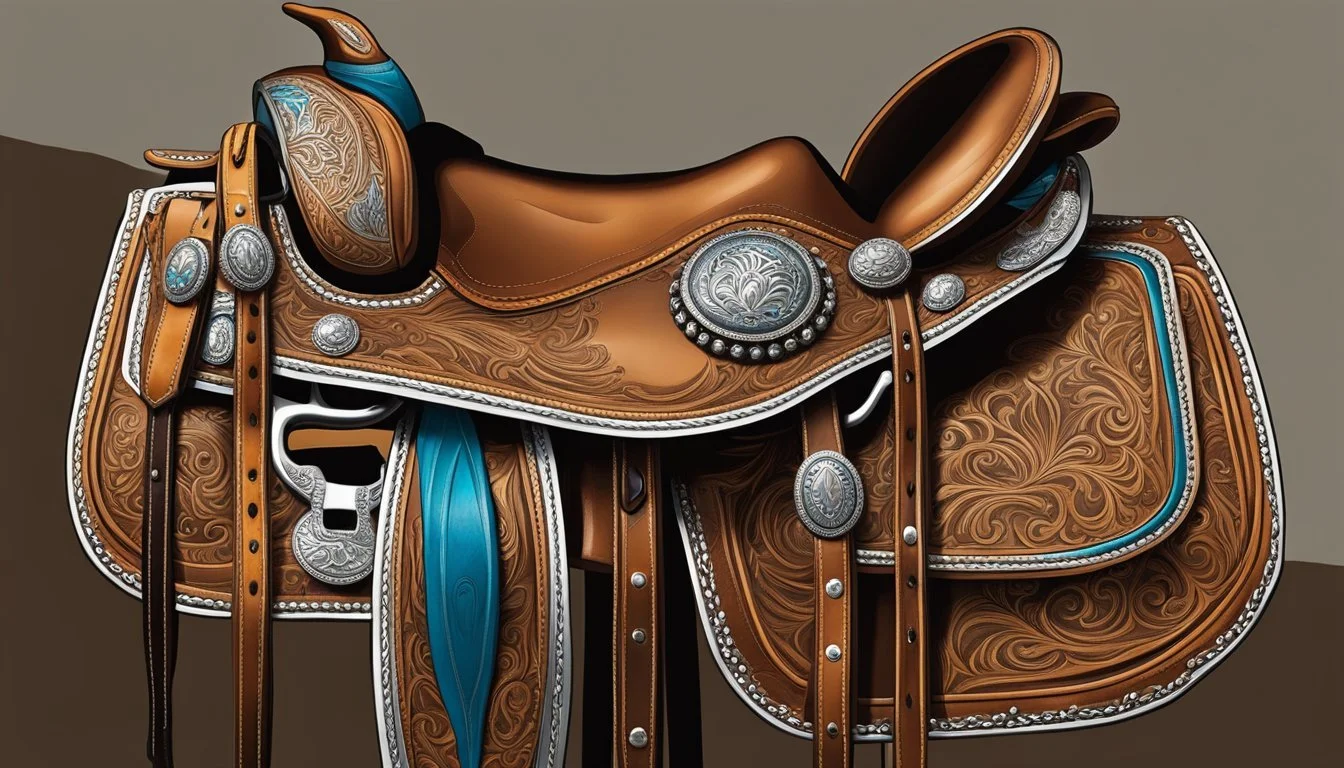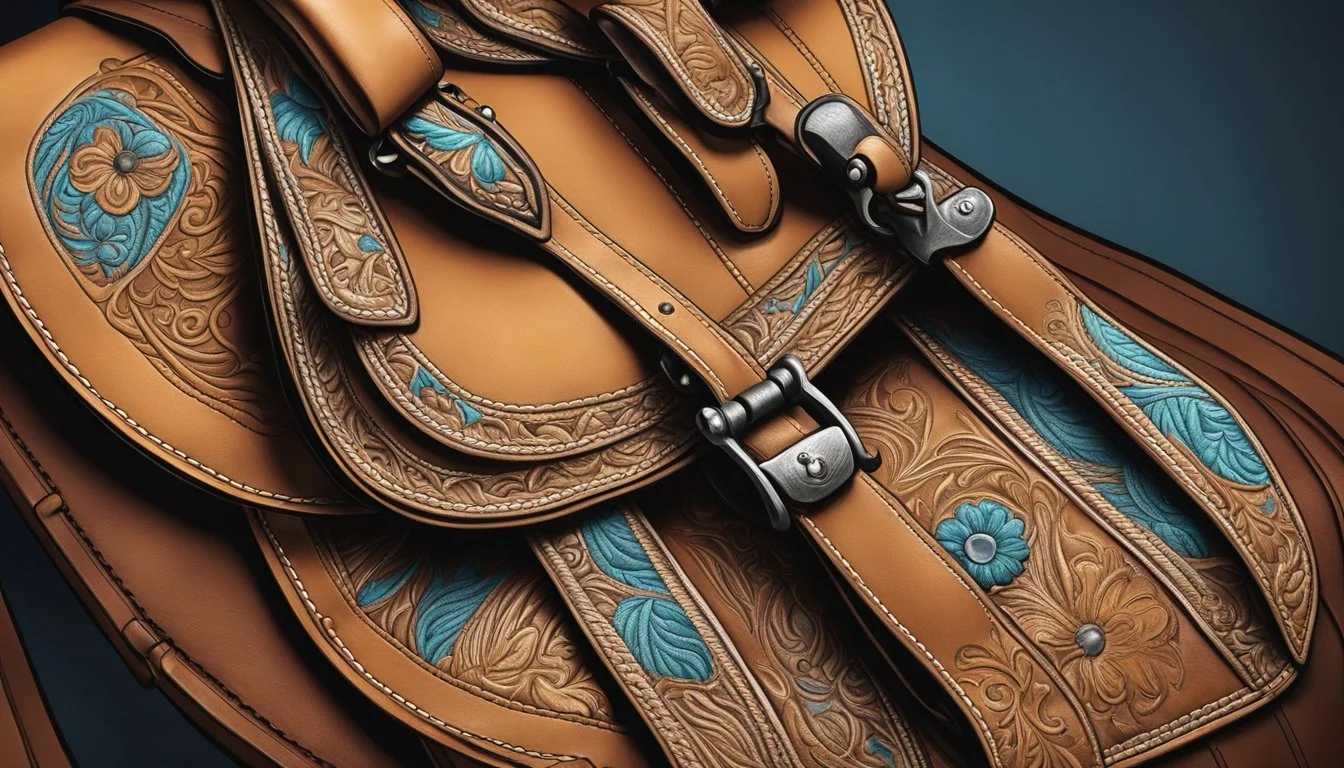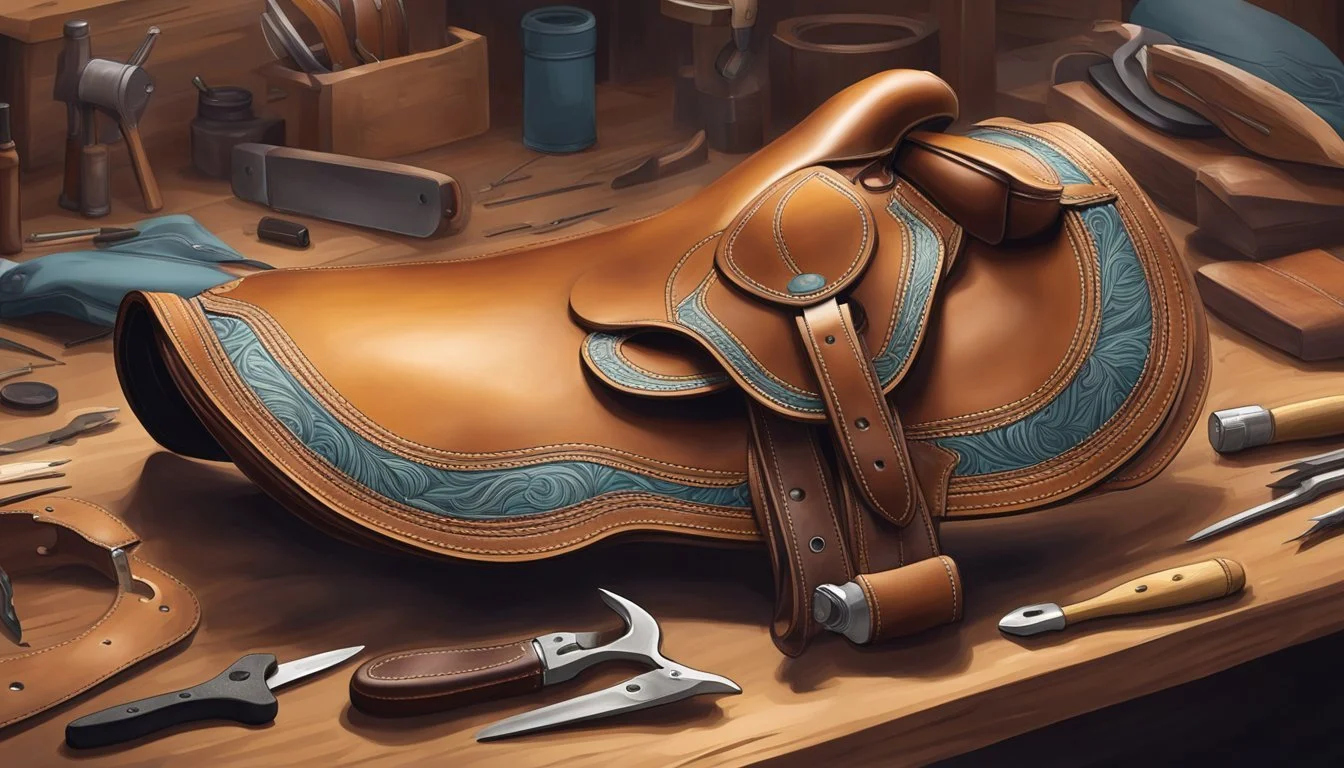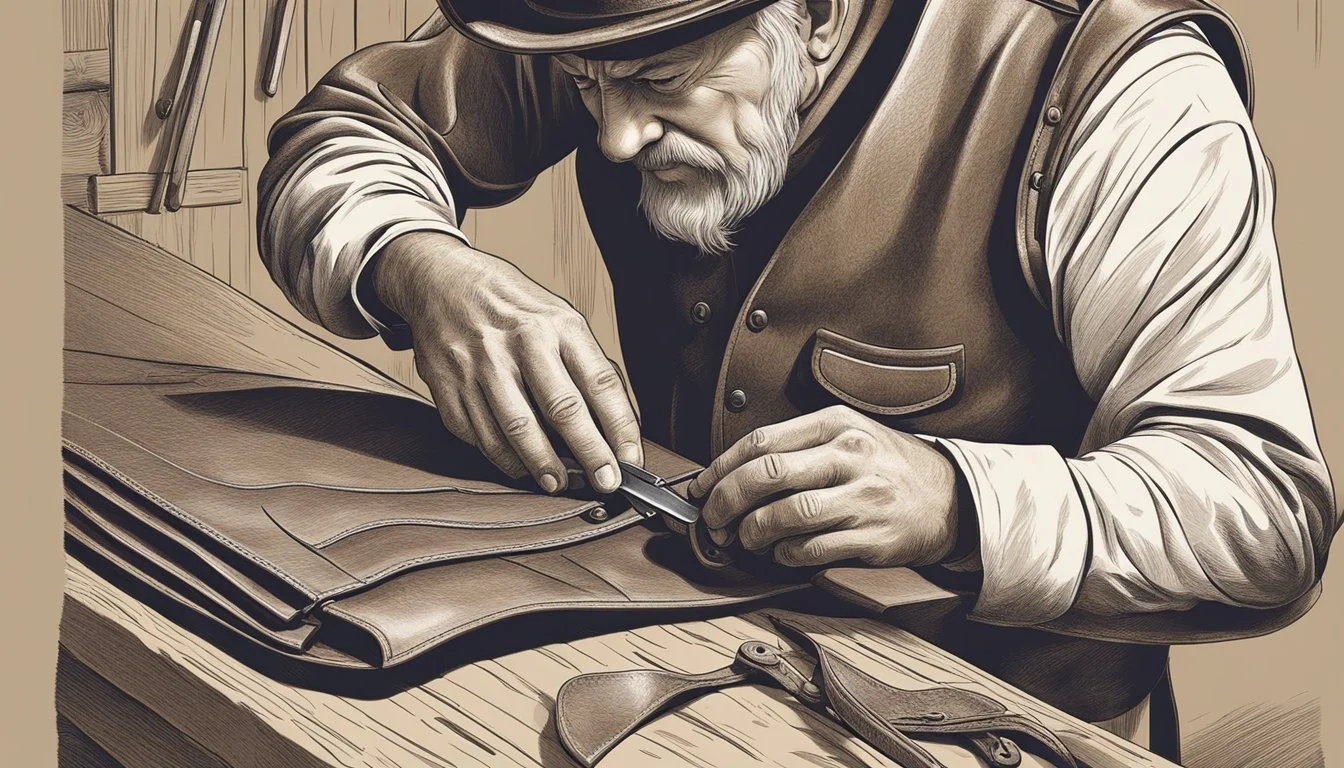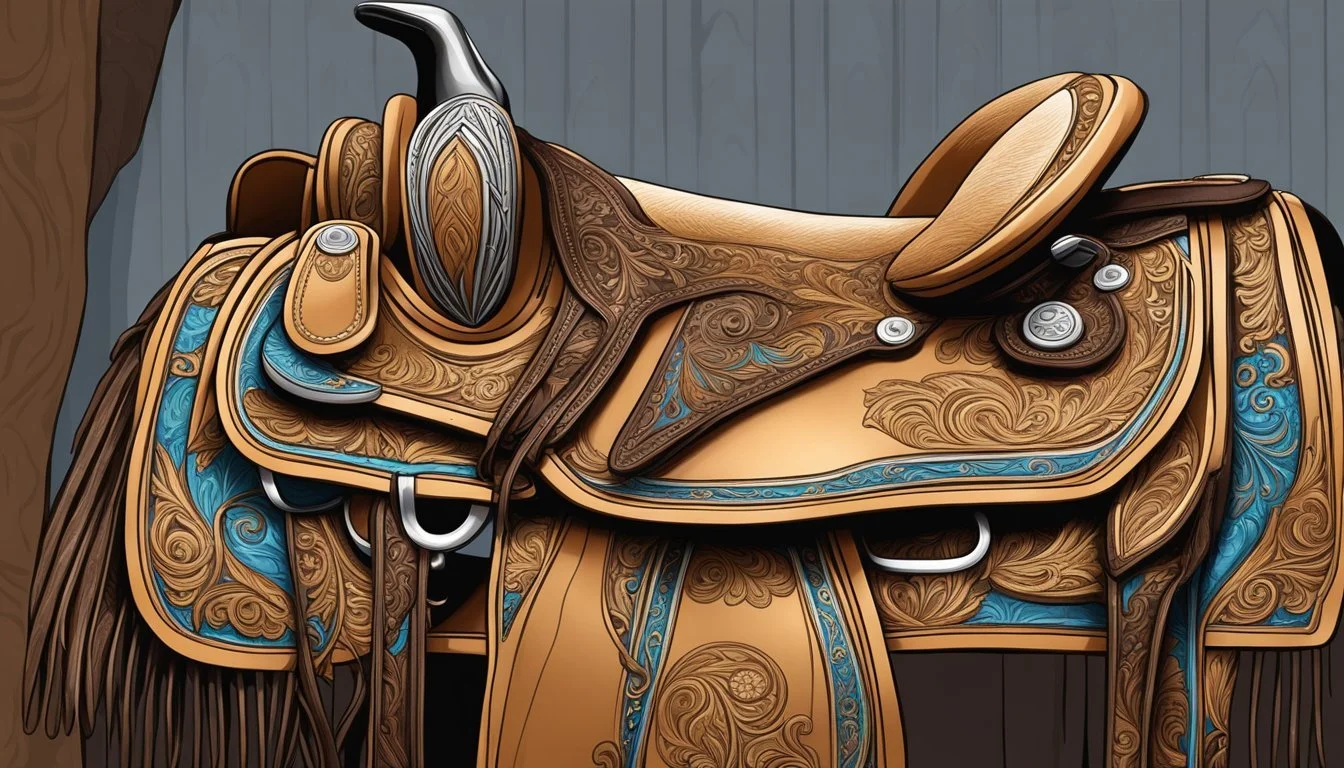The Techniques of Traditional Western Saddlery
Mastering Craftsmanship and Design
Traditional western saddlery is steeped in a rich history and remains an enduring symbol of the American cowboy spirit. The craft of saddle making is a time-honored tradition, where functionality meets art, resulting in durable and comfortable saddles suited for the rigors of western riding. Saddlers employ a variety of specialized techniques handed down through generations, each contributing to the unique style and performance of the saddle. The construction of a saddle begins with the saddle tree, which provides the structural foundation. Craftsmen select materials like wood or fiberglass for their durability and shape them to fit both the rider's comfort and the horse's anatomy.
Saddle makers meticulously shape leather, employing tools and skills that require precision and a deep understanding of the material. The decorative and practical aspects of the saddle, such as the horn, skirt, and rigging, are carefully considered and executed. Western saddles can be distinguished by their horn—a notable feature originally designed for securing cattle ropes during ranch work. This, along with other components like the cantle, fenders, and stirrups, is tailored to meet the unique demands of western riding disciplines, where riders may spend long hours on horseback and need their gear to be reliable.
Saddlery is not just a craft but a living tradition, reflecting both the practical needs and the cultural heritage of western riding. Saddles are not only essential for the comfort and safety of both horse and rider but also serve as an expression of personal style. As such, the art of western saddle making is a celebrated aspect of American heritage, symbolizing the melding of form and function as well as the western way of life.
History of Western Saddlery
Western saddlery has evolved over centuries to meet the demands of horseback riders in the American West. This section delves into the metamorphosis from early Mexican designs to fully-fledged American saddles, highlighting notable saddle makers and the profound influence of cowboy culture on the design.
Evolution from Mexican to American Saddles
The Western saddle originated from designs brought over by Spanish conquistadors in the 16th century. Vaqueros, the Spanish and later Mexican cattle herders, introduced the early designs to North America. Characteristics such as the high pommel and horn, deep seat, and large stirrups were optimized for the rigors of cattle work. As these saddles moved northward into what would become Texas and the American West, they were adapted by American cowboys who modified them to better suit their own terrain and livestock management practices.
Texas: Became a central region where Mexican saddle techniques were amalgamated with American needs.
Denver, Colorado & Omaha, Nebraska: Important centers for saddle innovation, incorporating local materials.
Iconic Saddle Makers
Several saddle makers left a significant mark on the history and development of Western saddlery. Among these,
St. Louis: Early hub for saddle making with artisans like Hermann H. Heiser who became renowned for their durable and intricately decorated saddles.
Denver: Counted among its residents masters such as Edward Bohlin, whose work symbolized the marriage between functionality and artistry, often producing saddles with silver ornamentation.
Saddle makers became as legendary as the cowboys who rode their products, their legacy evident in the saddles that are treasured antiques today.
Influence of Cowboy Culture on Design
The cowboy's way of life dictated the design and function of Western saddles. In the unforgiving landscape of the American West, a saddle wasn't merely equipment – it was a survival tool.
Saddles with a horn for roping cattle became a distinctive feature.
Durability and comfort: Essential for long rides across tough terrains.
The cowboy culture idolized in film and rodeo popularized these design features, embedding them in the identity of the American West. As a testament to this influence, Western saddles are not only a mainstay in ranch work but have also become symbols of the cowboy legacy.
Saddle Construction Basics
In the realm of traditional Western saddlery, the crafting of a saddle is an intricate process, merging enduring materials like leather and various supportive frameworks to ensure durability and comfort for both rider and horse.
Different Types of Western Saddles
Wade and Association are two prominent types of Western saddles. The Wade saddle, famed for its deep seat and large horn, is typically used for ranch work. In contrast, the Association saddle, also designed for work purposes, features a more substantial fork and horn, making it suitable for roping larger cattle.
Key Components of a Saddle
The anatomy of a Western saddle encompasses several key components:
Saddle Tree: Acts as the scaffold made from wood, metal, or modern materials like plastic or fibreglass.
Leather Covering: High-quality leather is stretched over the tree to form the seat, skirts, and fenders.
Rigging: Involves metal hardware for attaching the cinch, which secures the saddle to the horse.
A typical configuration includes a single cinch (traditional rigging) or a double cinch (full-rigged design).
Understanding Tree Development
The saddle tree is fundamental to a saddle's structure. Traditionally crafted from wood, contemporary trees may also utilize materials like fibreglass for added durability. The tree's design is crucial, with two arches linked by bars that conform to the horse's lateral spine, ensuring the weight is evenly distributed and minimizing discomfort for the animal.
Incorporating the correct materials and configuration in tree development is pivotal for the overall design and functionality of a Western saddle.
Materials and Tools
Traditional Western saddlery utilizes a range of materials and specialized tools to ensure durability and quality in each saddle. The choice of leather and the toolset used by craftsmen are central to the process, impacting both the aesthetics and functionality of the final product.
Leather Types and Choices
Leather is the primary material in Western saddlery, where skirting leather is often chosen for its thickness and strength, making it ideal for the main components of the saddle. Other types include:
Latigo: Known for its flexibility and strength; used for straps.
Harness: Treated for extra durability; used in high-stress areas.
Chap: Softer leather; used for decorative aspects and comfort.
Variations in leather quality can affect the saddle's resilience and lifespan. High-quality leather is treated with oils and stain to enhance its durability and aesthetic appeal.
Tools of the Trade
Crafting a Western saddle requires precision tools that have evolved from age-old traditions. Key tools include:
Awls: For piercing leather to prepare for stitching.
Hammers: To set nails and tacks firmly into the leather.
Stamping tools: Used to create intricate patterns and designs on the leather.
Thread: Strong, durable thread is essential for piecing together saddle parts.
Glue: Used to initially fix pieces before they are permanently attached.
Screws: Occasionally used for added strength in conjunction with nails and tacks.
Each tool has a specific purpose, and their proper use is crucial in achieving a saddle that is both beautiful and functional.
Crafting Techniques
Traditional Western saddlery is an intricate process requiring high levels of craftsmanship and precision. Artisans employ a variety of techniques to turn raw materials into a functional piece of riding equipment that prioritizes rider comfort and saddle durability.
Cutting and Shaping
Artisans begin with cutting and shaping the leather, a critical step dictating the saddle's size and shape. Using patterns, craftsmen meticulously cut the leather, ensuring each piece fits together perfectly. They then shape the leather over the saddle tree, which serves as the saddle's framework and is often made from wood or fiberglass.
Measure the leather: Assess dimensions for each saddle part.
Cut the leather: Utilize specialized tools to cut with precision.
Shape the saddle: Mold the leather to the saddle tree's contours.
Stitching and Finishing
Stitching and finishing are vital for durability and aesthetic appeal. Saddlers stitch pieces together using techniques that reinforce the saddle’s structure. Then they apply finishes to protect the leather from the elements and enhance its appearance.
Stitch patterns: Employ strong, even stitching to ensure longevity.
Apply finishes: Treat the leather with oils and sealants for protection.
Decorative Tooling
Finally, decorative tooling adds a distinctive character to each saddle. This is where the artisan's skills transform functional gear into a work of art. Using various stamps and tools, intricate patterns are embossed into the leather, reflecting both the tradition of Western saddlery and the individual style of the maker.
Select patterns: Choose designs that reflect the intended style.
Tool the leather: Carve designs with specialized tooling stamps.
Saddle Features and Customization
Western saddlery combines precision and innovation, creating not only a functional piece of riding equipment but also one that boasts intricate design and personalization options. Custom saddles offer riders the opportunity to tailor every aspect to their specific needs and aesthetic preferences.
Detailing with Conchos, Stamping, and Dye
Conchos are a prominent decorative element in Western saddles. Traditionally made from silver, these ornamental pieces serve not only to secure various parts of the saddle but also to reflect the rider's style. The stamping process imbues leather with patterns, ranging from simple geometric designs to elaborate scenes, showcasing the artisanship involved. Dyes are used to add color, enhancing the visual appeal of the saddle with rich browns, blacks, or even vibrant hues depending on the rider's desire.
Conchos: Typically silver, available in various designs.
Stamping: Imprints patterns for aesthetic and traditional value.
Dye: Offers a spectrum of color choices for personalization.
Creating a Custom-Fit Saddle
A custom-fit saddle is designed to match the unique contours of both the horse and the rider, ensuring durability and comfort. The construction of the saddle starts with a custom-made tree, which serves as the saddle's framework. Artisans carefully select materials and utilize traditional techniques, often hand-finishing each piece with tools like the drawknife. This attention to detail and precision allows for the saddle to be adjusted to specific measurements, ensuring a functional and comfortable fit.
Custom saddle tree: The foundation, tailored to specific measurements.
Material selection: Quality, durability, and comfort are paramount.
Hand-finishing: Ensures a custom and precise fit.
Care and Maintenance
Proper care and maintenance are crucial to preserving the leather, comfort, and durability of a Western saddle. A well-maintained saddle not only provides a better ride but also ensures the longevity of the tack. They should clean their saddle regularly to prevent the accumulation of dirt and sweat on the leather components like the fenders, cantle, horn, and stirrup leathers.
Here are essential steps for cleaning:
Cleaning: Use a mild soap or specialized saddle soap.
Apply the soap with a damp cloth or sponge.
Gently work up a lather on the leather to remove grime.
Rinsing:
Rinse the leather with a clean, slightly damp sponge to remove soap residue.
Drying:
Dry with a soft towel.
Allow the saddle to air dry completely, but not in direct sunlight as it can cause cracking.
After cleaning, conditioning the leather is imperative to keep it pliable and maintain comfort. Users should apply a high-quality leather conditioner, ensuring that it penetrates the intricate creases around the tacks.
Monthly Inspection: Every month they should inspect the saddle for loose tacks, worn stirrups, or any damage that could affect functionality. Small issues can quickly turn into expensive repairs or safety hazards if left unattended.
For keeping saddles functional and safe, owners must commit to this routine, thereby ensuring the performance and service life of their Western saddlery are maximized.
Saddle Fitting and Comfort
The crux of Western saddlery lies in the precise matching of horse and rider anatomies to the saddle, ensuring enduring comfort and improved performance. Failing to do so can lead to discomfort and potential injury for both parties.
Analyzing Rider and Horse Anatomy
For the rider, the seat must provide a steady and comfortable base. A properly padded seat helps in distributing the rider's weight evenly, minimizing pressure points. The seat size is critical; too small a seat cramps the rider, while too large a seat could lead to sliding and lack of control. For traditional Western saddles, stirrups must be positioned to allow the rider’s legs to hang naturally, with knees slightly bent, and fenders should be the correct length to avoid strain.
Horse anatomy requires equally careful consideration. The saddle must conform to the shape of the horse’s back without causing pressure or leaving gaps. Key areas to check are:
Gullet: This must provide enough clearance over the horse's withers to avoid rubbing and allow freedom of movement.
Bars: These should make even contact with the horse's back and not exert undue pressure on any single point.
Adjusting for Optimal Comfort
Adjustment of the saddle is paramount for comfort. For the horse, the angle and width of the saddle tree must align with the back and shoulder conformation to prevent hindrance in movement. A poor fit here can impede the horse's performance and lead to discomfort or injury.
For the rider, customization of stirrup length and seat padding can greatly enhance the riding experience. Stirrups should be adjusted so the rider has a slight bend in the knee when the foot is in the stirrup, which helps with balance and reduces fatigue. Overall, the saddle should support the natural posture of the rider, encouraging a position that is both secure and relaxed.
Western Riding Styles
Traditional Western saddlery reflects the practical and competitive requirements of different Western riding styles. Each discipline has distinct characteristics that influence the design and functionality of the saddle used.
Roping and Ranch Work
Roping saddles are designed with durability in mind to withstand the rigors of ranch work. They often feature a reinforced horn for dallying a lasso, and the tree of the saddle is made to distribute weight evenly when a calf is caught and the horse is holding the weight. Performance in these disciplines relies on the saddle's ability to facilitate quick mounts and dismounts, as well as allowing the rider to remain secure despite sudden stops and sharp turns.
Saddle Features:
Horn: Thick and sturdy for rope attachment.
Seat: Deep for stability during rapid movements.
Fenders: Free-swinging to allow for quick leg movement.
Reining and Cutting
The reining saddle facilitates the precise movements required in reining and cutting events, where riders guide horses through a pattern of circles, spins, and stops. These saddles typically have a lower horn so as not to interfere with the rider's grip, and they provide close contact with the horse to aid in communication through subtle shifts in the rider's weight and leg cues.
Saddle Highlights:
Skirt: Reduced in size to lessen the weight and increase horse and rider connection.
Stirrups: Positioned to enable easy changes in rider posture for balance during maneuvers.
Pleasure and Show Saddles
Show saddles blend functionality with visual appeal for riding style that includes competition in events such as Western pleasure, where the horse's movement and disposition are judged. They often feature ornate designs and additional silver ornamentation. Despite their decorative aspects, they still offer the rider comfort and support necessary for long periods in the saddle, with a seat that aids in proper positioning.
Characteristic Elements:
Seat: Balanced to promote correct riding posture.
Finish: Embellished with tooling and accents for aesthetic appeal.
These saddles are integral to the rider's performance, enhancing the partnership between horse and rider specific to each Western riding discipline.
Cultural Significance
Western saddlery is not merely a craft but a rich emblem of American heritage, encapsulating the spirit of the cowboy culture through its distinctive gear and symbolism.
Saddlery as Symbol of Western Heritage
Western saddlery, with the saddle at its core, embodies the rugged individualism and enduring spirit of the American West. Saddles, along with accompanying gear like chaps, boots, hats, and spurs, have become powerful symbols that represent more than just functional attire; they signify a legacy. Their intricate designs and craftsmanship are tributes to the traditions passed down through generations, telling a story of both the utilitarian and artistic heritage of the cowboy lifestyle.
Saddles in Modern Cowboy Culture
Today's western saddlery, while reflecting contemporary techniques, continues to honor its historical roots within cowboy culture. Modern cowboy events and rodeos still showcase the saddle as a key element of the cowboy's gear, reinforcing its status as a cultural staple. At the same time, these saddles integrate modern materials to marry tradition with progress, strengthening their place in an evolving culture that respects its past while embracing innovation.

